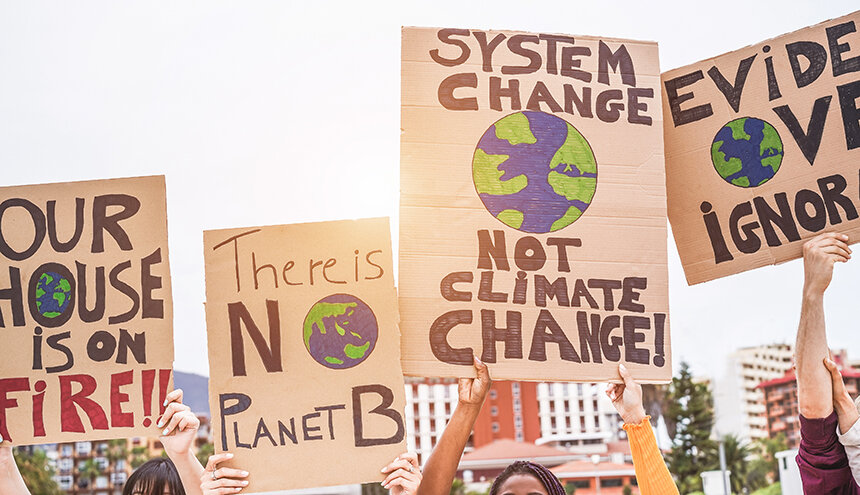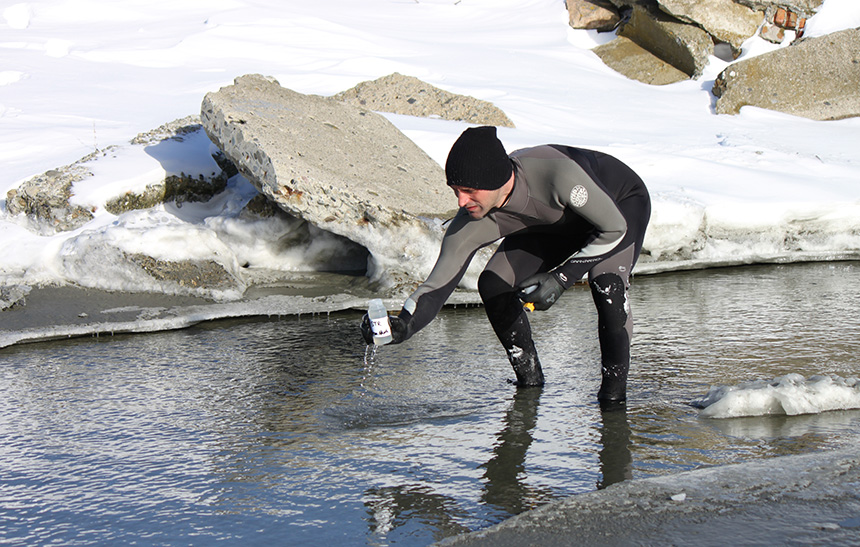Environmental Justice Movement Continues to Dodge Dirty Obstacles
Much work still needs to be done to create fair and equitable society for all
May 23, 2022

If the Environmental Protection Agency’s definition of environmental justice is the gold standard, Rhode Island is trading in penny stocks. The Ocean State is hardly alone. The rich and powerful continue to sacrifice the environment and public health to, well, increase their wealth and influence.
Only now, three and a half decades after the two-word phrase briefly grabbed the nation’s attention, is environmental justice being taken seriously enough to at least have bills written that define it, governmental reports that mention it, and policy enacted to address it. For this progress, we can thank protest, activism, education, and a late-1980s report. But moving the term further from paper to practice will take an even greater struggle.
Despite progress made on this fragile front, the protection of the environment, public health, and people’s well-being are still accessory concerns — the evidence backed up from Allens Avenue in Providence to the Amazon rainforest in Brazil.
“For so long Black and brown communities have been treated like everyone’s dumpster, and we can’t have that anymore,” Jennifer Rourke, co-founder of the Rhode Island Political Cooperative and a Renew Rhode Island member, said at a recent environmental justice forum.
The EPA defines environmental justice as “the fair treatment and meaningful involvement of all people regardless of race, color, national origin, or income, with respect to the development, implementation, and enforcement of environmental laws, regulations, and policies.”
The federal agency says environmental justice will be served when everyone enjoys the same degree of protection from environmental and health hazards, and has equal “access to the decision-making process to have a healthy environment in which to live, learn, and work.”
Born out of anti-toxics and civil rights activism, the term environmental justice emerged to a broader audience in the early ’80s, when thousands of tons of dirt contaminated with polychlorinated biphenyls (PCBs) was dumped at a newly built hazardous waste landfill in a predominantly Black county in North Carolina despite significant community protest.
The insidious scheme, like many before and after it, placed profit over people. Governments and private corporations benefit financially from polluting marginalized communities. The laws meant to protect the residents — often people of color — living in these neighborhoods, from local stormwater management regulations to the federal Clean Water and Clean Air acts, are often ignored or underenforced. They are civil violations, not criminal.
“The environmental justice movement began with communities who were most impacted by corporate-driven toxic waste polluting the environment,” Joann Ayuso, founding director of Movement Education Outdoors, said last month during a Rhode Island Environmental Education Association event. “Because of systemic racism, it was and remains our communities that have been forced to speak about these issues.”
The 1982 PCBs dumping and other similar incidents around that time eventually triggered research into the environmental and health burden borne by low-income and power-poor communities. This examination led to an eye-opening report published in 1987 titled “Toxic Wastes and Race: A National Report on the Racial and Socio-Economic Characteristics of Communities with Hazardous Waste Sites.”
The 86-page report documented the federal government’s predisposition to place hazardous waste sites within Black communities, piling environmental racism on top of social racism.
“Racism is the intentional or unintentional use of power to isolate, separate and exploit others,” according to the report conducted by the United Church of Christ’s Commission for Racial Justice. “Racism confers certain privileges on and defends the dominant group, which in turn sustains and perpetuates racism. … Racism is more than just a personal attitude; it is the institutionalized form of that attitude.”
Toxic Wastes and Race noted policies ushered in by the Reagan administration “signaled a reduction of domestic programs to monitor the environment and protect public health.”
The siren song of deregulation still plays loudly today. In early April, the Supreme Court, by a vote of 5-4, revived a Trump administration ruling that severely limited the ability of states and Indigenous tribes to restrict projects, such as pipelines, that would damage the environment and public health.
With its decision, the court’s far-right majority upended five decades of settled law recognizing states’ authority to protect their own waters. The five justices couldn’t be bothered to issue even a sentence to defend their decision.
The Clean Water Act of 1972 provides federal standards to prevent pollution from “man-made or man-induced alteration of the chemical, physical, biological, and radiological integrity of water.” Such changes can cause cancer and other health impacts. Industry groups, however, have long complained that the law is unfair to their business interests — i.e., their profits.
“Racial and ethnic communities have been and continue to be beset by poverty, unemployment and problems related to poor housing, education and heath,” according to the 1987 report. “These communities cannot afford the luxury of being primarily concerned about the quality of their environment.”
Thirty-five years and six presidents later, the same problems grip the same communities, as the neighborhoods of South Providence, Washington Park, and Olneyville can attest.

These underappreciated communities are routinely targeted to host operations that have detrimental environmental and public-health impacts, such as landfills and other waste management facilities, fossil fuel infrastructure, and the storage of toxic materials. These polluting facilities emit arsenic, lead, mercury, and other contaminants that foul air, soil, and water.
These exploited communities also lack trees, green space, and other public amenities enjoyed by those, mostly white people, who live in neighborhoods — think the East Side of Providence or the town of Little Compton — that avoid being inundated with polluting businesses and practices, where environmental laws are more strictly enforced, and where green space is common.
For instance, summer days in Central Falls are up to 15 degrees hotter than the East Side of Providence because of a disparity in tree canopy cover.
In a 2007 follow-up study to its 1987 report, United Church of Christ researchers reviewed data collected over a 20-year time period and found that more than half of the people who live within 1.9 miles of toxic waste facilities in the United States are people of color. (A 2000 census brief showed 12.9% of the U.S. population was Black, 12.5% was Hispanic, 3.6% was Asian, and 1.5% was Indigenous.)
The 175-page study also found neighborhoods with polluting facilities clustered close together have higher percentages of people of color than those with non-clustered facilities. The neighborhoods with clustered facilities also have disproportionately high poverty rates.
“It is ironic that twenty years after the original Toxic Wastes and Race report, many of our communities not only face the same problems they did back then, but now they face new ones because of government cutbacks in enforcement, weakening health protection, and dismantling the environmental justice regulatory apparatus,” the Rev. M. Linda Jaramillo wrote in the forward for “Toxic Wastes and Race at Twenty: 1987-2007.” “Our new report … again signals clear evidence of racism where toxic waste sites are located and the way government responds to toxic contamination emergencies in people of color communities.”
A 2016 report by the Center for Effective Government found people of color are nearly twice as likely as white people to live within a fenceline zone of an industrial facility.
While highlighting these discrepancies — a practice that has become common by elected officials (a March 15 Rhode Island Senate discussion about environmental justice focus areas begins at the 14:30 mark in the above link) and in academic research — is vital to addressing the problem, true environmental justice won’t be achieved until the underprivileged communities that are systemically impacted by racism are allowed a significant say in the decision-making process.
The federal government began to address the issues associated with environmental justice in the 1990s with an executive order that established EJ offices in the EPA, the Department of Justice, and other agencies.
However, most of the heavy lifting needed to address all of the issues wrapped into environmental justice is being done by nonprofits, activists, community groups, and impacted residents. Much of this work, including testifying at statehouse hearings and rallying diverse support, is done by volunteers when they aren’t working, taking care of their families, or trying to catch their breath.
To view the series, click here.



